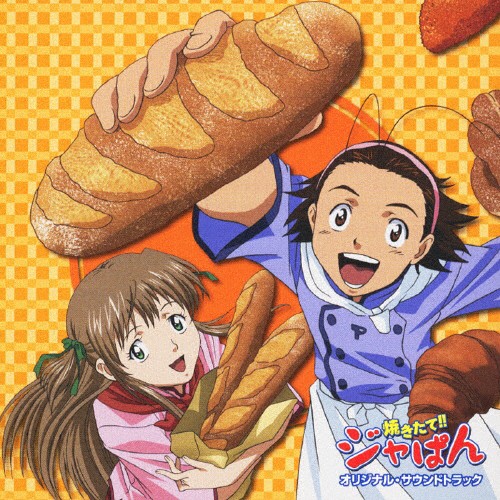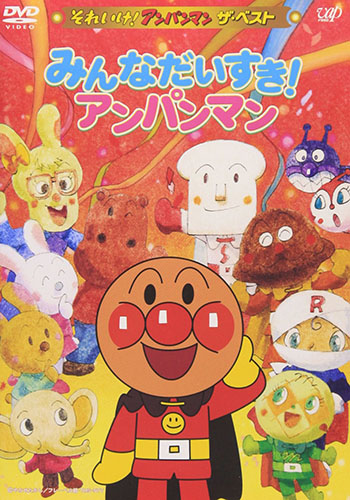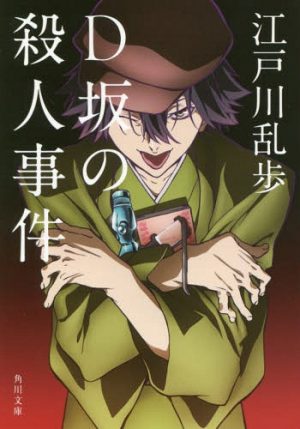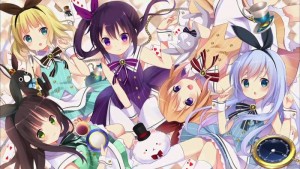
Please forgive our punny title! Today we’re talking bread, known as pan in Japan, another great example of cultural synthesis, or taking a foreign concept and reinventing it into uniquely Japanese forms now famous in their own right. Bread in Japan is serious business and seriously fun all across the country. Join us in exploring the history of Japanese bread, its effect and variety in modern culture, and some choice examples of bread-focused anime. No loafing! Prep your oven, let’s get baking!
Bread’s Introduction to Japan
Bread first came to Japan, along with firearms, in the 16th century through the Portuguese after one of their ships drifted ashore in Tanegashima, an island in the south of Japan below Kyushu. This origin is seen in the word pan itself which is derived from the Portuguese word. However, for hundreds of years, bread was exclusively consumed by foreign traders and missionaries in Japan until the 19th century when China’s defeat by the British Empire in the Opium Wars prompted the Japanese government to investigate ways to strengthen their military. Military scholar Egawa Tarozaemon called for more Westernization of their forces and using bread as a ration was part of that since it kept longer and could be mass-produced beforehand.
Later on in the late 19th century as Japan went full throttle into Westernization, bread entered the mainstream in 1874 largely thanks to Yasubei Kimura, a former samurai who created the now-ubiquitous anpan,—a sweet roll full of sweet adzuki (red bean) paste—with his son using techniques they learned from a man who had worked as a chef for foreign residents in Nagasaki. The anpan proved to be a huge success thanks to being similar to familiar Japanes confections but with a unique texture, shape, and flavor. After anpan were presented to, and loved by, the Meiji Emperor, bread became even more popular and spread across the country where enterprising bakers started to create some of the many varieties enjoyed today. Bread was also given a major push after World War II from the Americans who sent huge amounts of wheat as part of their relief efforts to combat the post-war food shortages which put bread into school lunches and cemented it as a major staple.
Modern Bread Culture in Japan
Today, bread products actually account for more sales than rice and Japan is said to have the most variety of breads available in any country in the world. While classics like anpan remain popular, many types of Japanese-original breads have been developed such as melonpan, a sweet, vaguely melon-shaped bread with a crunchy exterior and soft inside; crispy, deep-fried currypan which is almost like a donut filled with Japanese curry; and many types of unique sandwiches like yakisobapan which is fried soba noodles with a special oyster sauce placed within a hotdog bun-like roll. Seemingly endless varieties and mixtures exist and many bakeries combine other local delicacies with bread to create special regional dishes to help drive business and tourism. Even basic white bread is a bit different in Japan with its pronounced softness and springy texture and wide slices cut much thicker than what is typical in places like America.
Japan is also famous for helping to make home bread production more accessible with bread machines which were first invented in 1986 by Ikuko Tanaka and a team of engineers at Matsushita Electric Industrial Co. (now known as Panasonic). Modern bread machines are highly advanced and specialized, able to do things like make bread using rice instead of wheat and have become popular throughout the world.
Bread in Anime & Manga
As everyday items in Japan, bread has made appearances in many anime and manga series such as Lucky Star’s famous discussion of where the head lies on Choco Cornets and whether they resemble a seashell or caterpillar and the trope-y scene of the protagonist dashing off to school in the morning with a comically thick slice of bread between their teeth.
Beyond that, we have series like Yakitate!! Japan (whose title is a pun similar to this articles’ title meaning ‘fresh-baked Ja-pan’) where bread is the main focus of the series. In this case, the story follows a young boy named Kazuma Azuma who is striving to make something worthy to be called Japan’s national bread (Ja-pan) which is helped by his extraordinary warm hands which allows his dough to ferment faster. Another series worth mentioning is Pan de Peace!, a slice of life (slice of bread?) 4-koma manga and short anime series following Minami Tani and her friends who are all obsessed with different types of bread.
We’d be remiss to not also mention the extraordinary popular children’s series Anpanman which stars the titular superhero who has an anpan for a head as he fights against the bacteria-themed villain Baikinman and others. Anpanman is often assisted by fellow bread-themed heroes like the toast-faced Shokupanman and spicy Currypanman and continues to be beloved by children, spawning tons of merchandise, spinoffs, and even theme parks. Anpanman is also related to the origin of One-Punch Man, a play on words using the Japanese pronunciation of ‘Wanpanman’.
Final Thoughts

Altogether, Japan’s relationship with bread has been an interesting one that has made a big impact on the food item worldwide and is even a focal point in popular media. We encourage our readers to do their own research into Japanese bread and to definitely try out regional types like the delicious oyster curry bread on Miyajima Island if you get the chance! Let us know your favorite breads and anime bread moments in the comments section below and be sure to stick around Honey’s for more of all things awesome, glutenous baked goods and otherwise! Until next time, go out there and make some Bread Buddies. See ya~!
Recommended Post
[Anime Culture Monday] Vending Ventures - All About Ramune
Recommended Post
Vending Ventures - All About Canned Coffee
Recommended Post




